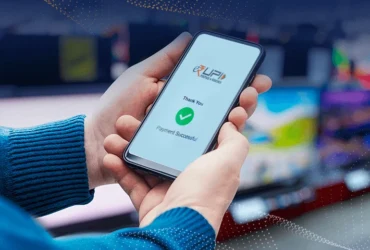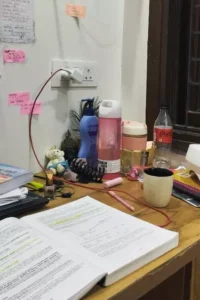Share & grow the world's knowledge!
We want to connect the people who have knowledge to the people who need it, to bring together people with different perspectives so they can understand each other better, and to empower everyone to share their knowledge.
Create A New Account



How to identify 5 Mukhi Rudraksha?
A five mukhi Rudraksha can be recognized by the five clear, natural lines that run from top to bottom. These lines, called mukhis or faces, should be easy to see and spaced evenly. When you look at it from the top, it should look like it has five sides. Inside, a real five mukhi Rudraksha also has fRead more
A five mukhi Rudraksha can be recognized by the five clear, natural lines that run from top to bottom. These lines, called mukhis or faces, should be easy to see and spaced evenly. When you look at it from the top, it should look like it has five sides. Inside, a real five mukhi Rudraksha also has five sections that match the five lines outside. Ask ChatGPT
See lessCan I go to the toilet while wearing Rudraksha?
No, You should remove your Rudraksha beads before using the bathroom. This is done both to protect them from physical and energetic contaminants and to honor their celestial nature.
No,
You should remove your Rudraksha beads before using the bathroom. This is done both to protect them from physical and energetic contaminants and to honor their celestial nature.
See lessIf you let a cavity go and never get it fixed, what will eventually happen to the tooth?
Many people, because of fear, money, or lack of time, decide not to visit the dentist when they get a cavity, crack a tooth, chip a crown, or lose a filling. Often, people only go to the dentist when they feel pain. If it doesn’t hurt, they think they can wait until it’s more convenient. But waitingRead more
Many people, because of fear, money, or lack of time, decide not to visit the dentist when they get a cavity, crack a tooth, chip a crown, or lose a filling. Often, people only go to the dentist when they feel pain. If it doesn’t hurt, they think they can wait until it’s more convenient. But waiting is not a good idea!
If a tooth chips or a filling falls out, it usually means there’s already a problem. Fillings often fall out because the tooth underneath has started to decay again. A chip or crack may mean the tooth has a fracture. These problems might not hurt right away — maybe because of your pain tolerance or because the damage is in an area with fewer nerves. But just because it doesn’t hurt doesn’t mean you should ignore it.
Whenever something happens to your tooth, it’s always best to see your dentist as soon as you can. Your dentist can find out what’s wrong and fix it early. Early treatment usually costs less, hurts less, and gives your tooth a better chance of staying healthy. At the very least, let your dentist check and tell you if it’s okay to wait. Dentists know how to find problems and understand how they can get worse. Since you can’t see inside your own teeth, it’s always safer to get an expert’s opinion.
Remember this: “Cavities are like cancer — when they hurt, it’s often too late.”
Think about this: If you lose a filling and feel no pain, you might still have hidden decay. Fixing it early is quick and inexpensive. But if you wait until it hurts, the decay might reach the nerve. Then you might need a root canal, a crown, or even lose the tooth and need an implant or bridge. That costs much more money, time, and pain than fixing a small problem early.
So please, don’t wait! If something happens to your tooth — even if it doesn’t hurt — call your dentist and make an appointment. Your teeth will thank you for it!
See lessHow should I prepare for UPSC without any coaching?
Yes, you can pass the UPSC without any coaching; many candidates have succeeded on their own. All you need is a good strategy, the right resources, and a high degree of self-discipline. Start by downloading the official UPSC syllabus and previous year's exam papers to understand what you need to stuRead more
Yes, you can pass the UPSC without any coaching; many candidates have succeeded on their own. All you need is a good strategy, the right resources, and a high degree of self-discipline.
Indian Politics – M. Laxmikanth
Modern History – Spectrum by Rajiv Ahir
Indian Economy – Ramesh Singh or Nitin Singhania
Geography – G.C. Leong + NCERT
Environment – Shankar IAS
Insights on India
Mrunal.org
Vision IAS
ClearIAS
Drishti IAS (for Hindi/English)
Self-study requires focus and commitment, but allows you to take full control of your preparation. Be consistent, avoid distractions, and be confident in your strategy.
See lessDoes real Rudraksha float on water?
No, a genuine Rudraksha doesn't usually float in water; it usually sinks. A genuine Rudraksha bead is quite dense because it's made of tough, natural seeds with multiple internal chambers. Therefore, when you place a genuine Rudraksha in a container of water, it should usually sink to the bottom. HoRead more
No, a genuine Rudraksha doesn’t usually float in water; it usually sinks.
A genuine Rudraksha bead is quite dense because it’s made of tough, natural seeds with multiple internal chambers. Therefore, when you place a genuine Rudraksha in a container of water, it should usually sink to the bottom.
However, this isn’t a foolproof test to determine whether a Rudraksha is genuine or fake. Some fake Rudraksha beads are so heavy that they even sink. Furthermore, some genuine, but dry or damaged, Rudraksha beads may float because air is trapped inside.
See lessHow to Check If Rudraksha is Real?
To determine if a Rudraksha bead is authentic, several tests can be performed. These include examining the surface texture, counting the Mukhis (lines), looking for natural holes, observing its behavior in water, and using a magnifying glass to inspect its structure. More advanced methods, such as XRead more
To determine if a Rudraksha bead is authentic, several tests can be performed. These include examining the surface texture, counting the Mukhis (lines), looking for natural holes, observing its behavior in water, and using a magnifying glass to inspect its structure. More advanced methods, such as X-rays or CT scans, can also be used to confirm the number of compartments within the bead.
Mukhi Count: Authentic Rudraksha beads have clear, natural Mukhis (lines) running from top to bottom, corresponding to the number of compartments within the bead.
Surface Texture: Authentic Rudraksha beads have a rough, uneven, and natural surface texture. Fake beads may be smooth and polished.
Color and Shape: Authentic Rudraksha beads show natural color variations and have a consistent, natural shape.
Water Test: Place the Rudraksha in water. An authentic bead will sink, but a green or air-filled bead may float. A sinking bead is not necessarily authentic, as some fake beads may contain lead.
Copper Coin Test: Place the Rudraksha between two copper coins. If the bead rotates the coins, it could be authentic. However, this test is not conclusive, as any round object can cause rotation.
Thermal Reaction Test: An authentic bead is resistant to breaking or disintegrating after brief exposure to heat.
X-ray or CT scan: These tests can reveal the internal structure of the bead, confirming that the number of compartments matches the Mukhi count.
Lab Certification: Reputable sellers can provide lab certifications for their Rudraksha beads, verifying their authenticity.
See lessCan UPSC aspirants share pictures of their study room?



See less